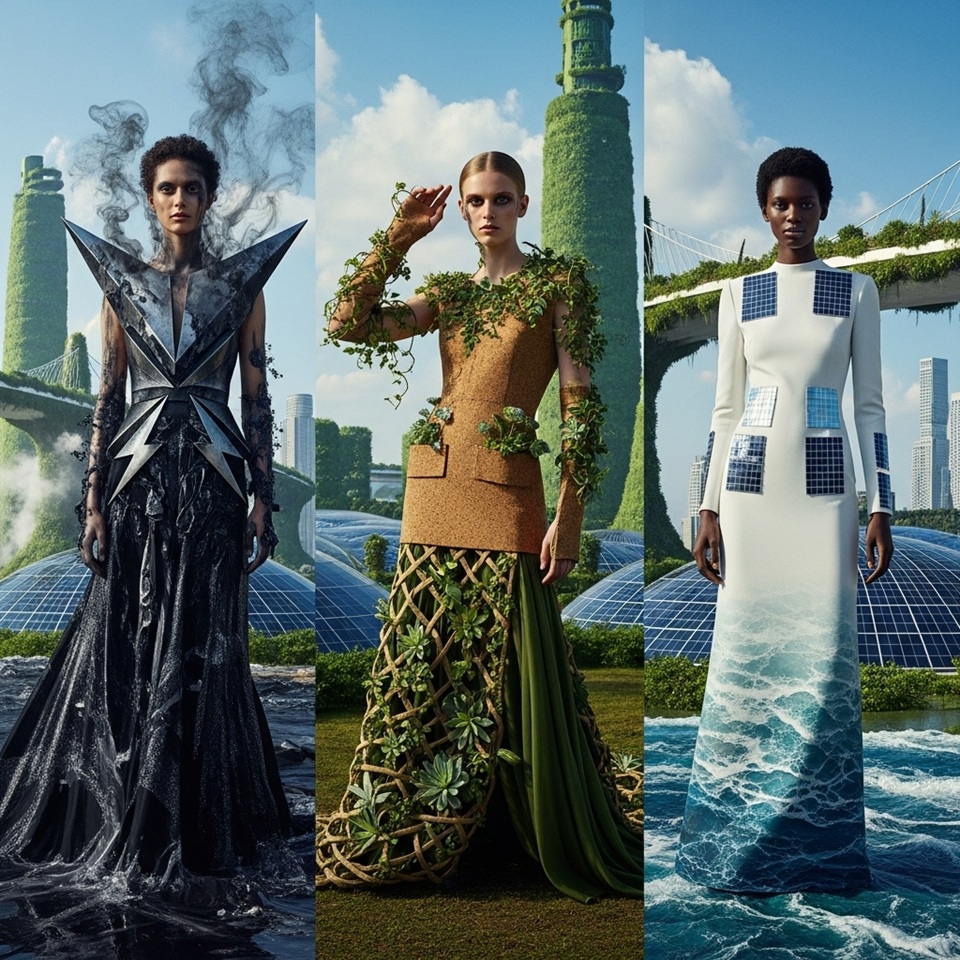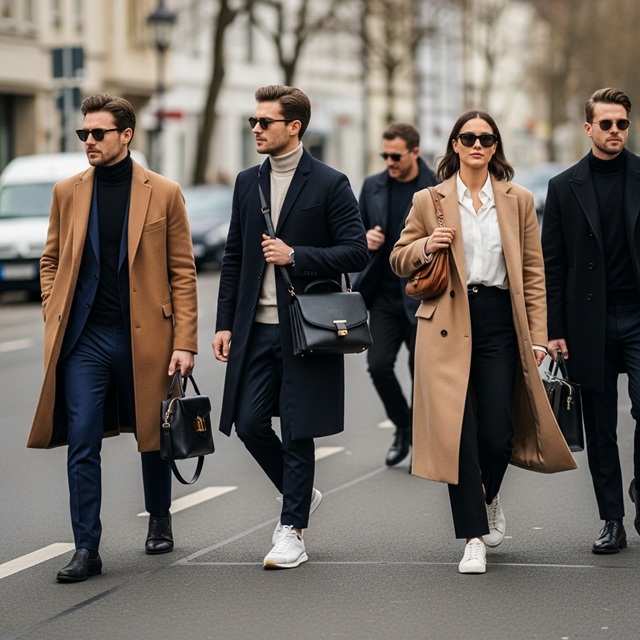Eco-Fashion and Climate Transformation: Sustainable Style
Fashion has always reflected human emotions and social change. Today, as conversations around sustainability and inclusivity grow louder, eco-fashion stands at the center of a global transformation. It’s not just about fabrics or design anymore; it’s about reshaping how we see ourselves and how we live together on this planet.
This editorial explores how eco-fashion intertwines with climate action, social unity, and the deep desire for transformation—from division to togetherness.
The Connection Between Fashion and Climate Awareness
Fashion is one of the most expressive forms of human identity, yet it’s also among the most polluting industries in the world. From fast fashion waste to toxic dyes in waterways, the traditional fashion cycle contributes heavily to environmental degradation. Eco-fashion challenges this system.
Instead of promoting disposable trends, eco-fashion encourages long-term value—where every piece tells a story of care, ethics, and environmental respect. Brands are now designing with purpose: using organic fibers, recycled materials, and production methods that reduce water usage and carbon emissions.
This shift is not only a technical one but also a cultural one. People are beginning to see clothing as part of a larger ecosystem, not just a personal style statement.
From Racism to Unity: The Human Side of Eco-Fashion
The idea behind eco-fashion goes beyond saving the planet—it’s about saving humanity from itself. The fashion world has long struggled with representation and inclusivity. For years, runways and campaigns lacked diversity, reinforcing cultural divisions.
The new generation of designers is rewriting this narrative. Many are inspired by love and transformation, creating collections that honor every skin tone, body type, and heritage. These designers use fashion to celebrate togetherness, turning old wounds of racism and inequality into symbols of healing and pride.
This transformation mirrors the climate movement itself—global, inclusive, and centered on unity. We can’t solve the climate crisis without empathy, and fashion is one of the most powerful tools to express that empathy.
Sustainable Materials: The Fabric of Change
Eco-fashion starts with the material. Designers are now experimenting with everything from seaweed-based fibers to pineapple leather and bamboo silk. These innovations help reduce dependence on petroleum-based textiles and synthetic dyes.
A few examples of groundbreaking sustainable materials include:
-
Tencel (Lyocell): Made from eucalyptus pulp in a closed-loop system.
-
Piñatex: A leather alternative created from pineapple leaf fibers.
-
Hemp and Linen: Naturally biodegradable, durable, and low-impact.
-
Recycled Polyester (rPET): Made from discarded plastic bottles, reducing landfill waste.
-
Organic Cotton: Free from harmful pesticides and better for soil health.
The movement toward these fabrics is not only eco-friendly but also symbolic—a fabric of togetherness that connects human creativity with the natural world.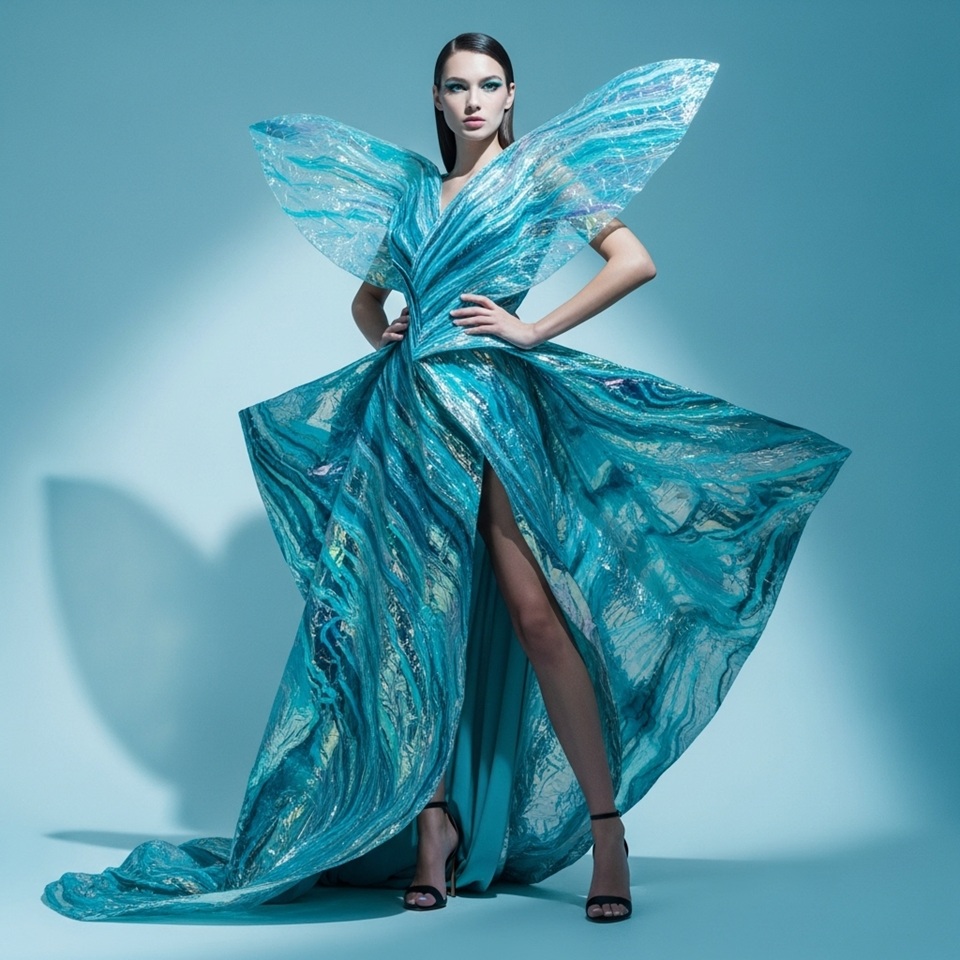
Fashion Activism and Climate Justice
Eco-fashion is deeply tied to climate justice. Many communities affected by pollution and exploitation in the fashion supply chain are from the Global South. By addressing sustainability, eco-fashion also shines a light on social inequality.
Designers from Africa, South America, and Asia are reclaiming their voices in the sustainability conversation. Brands like Studio 189 (Ghana) and SOKO Kenya are blending traditional craftsmanship with ethical production, proving that sustainable fashion can be beautiful, fair, and profitable.
This isn’t just about changing consumer habits—it’s about rewriting the rules of global trade and labor fairness.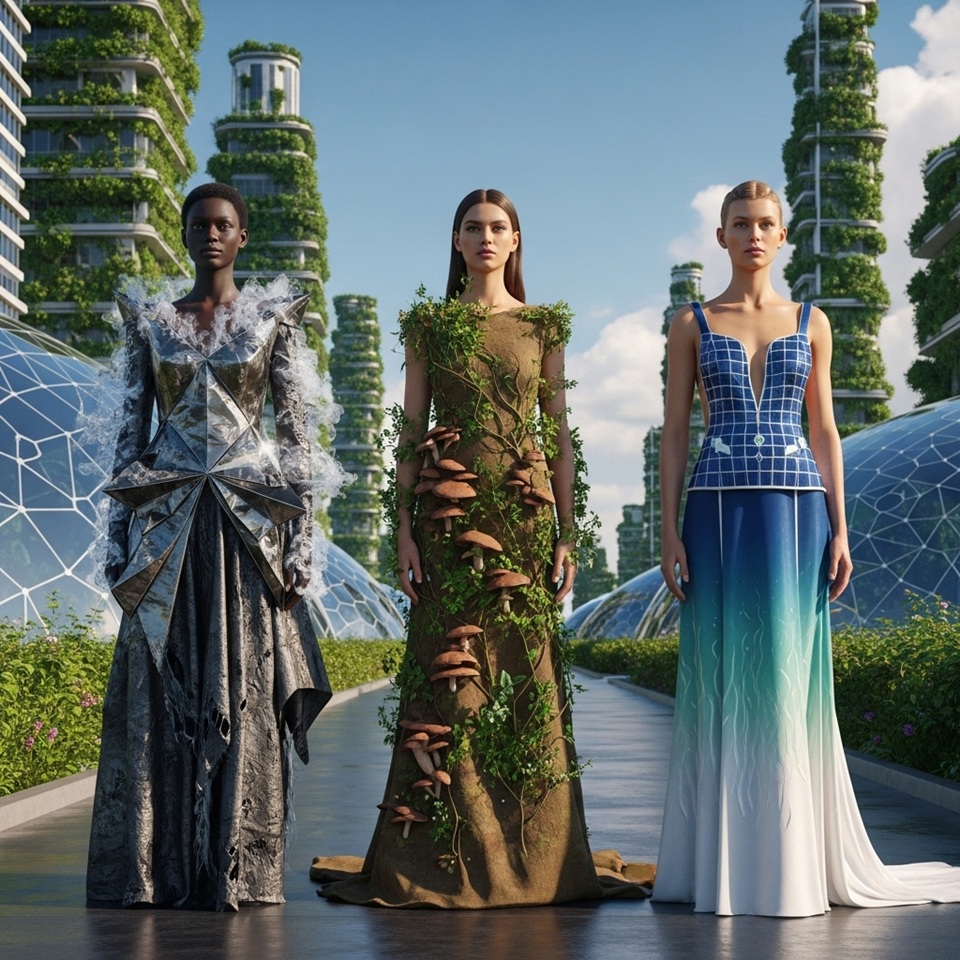
The Power of Reuse and Upcycling
Eco-fashion isn’t always about buying new items. Sometimes, it’s about transforming what already exists. Upcycling and vintage revival are at the core of this mindset.
From reimagined denim jackets to patchwork dresses made from old kitenge fabrics, designers are turning discarded garments into modern art pieces. This creative process sends a strong message: transformation is possible—even from the unwanted or broken.
It’s a philosophy that mirrors how humanity can evolve from division to unity, from waste to renewal.
Inclusivity in Design and Production
Inclusivity is no longer optional in fashion. Consumers now expect brands to represent real people. Eco-fashion brands are taking this seriously by offering gender-neutral lines, adaptive clothing for people with disabilities, and diverse body representation in campaigns.
This inclusivity extends to production, too. Workers are being treated as partners rather than invisible laborers. Ethical certifications like Fair Trade, GOTS (Global Organic Textile Standard), and B-Corp are helping brands maintain transparency and accountability throughout their supply chains.
Cultural Rebirth Through Fashion
Eco-fashion also gives room for cultural rebirth. African prints, indigenous embroidery, and native weaving techniques are being revived in sustainable collections. Designers are blending ancestral knowledge with modern practices, creating a balance between tradition and innovation.
For example, Uganda’s growing eco-fashion scene features designers who use local cotton, recycled beads, and natural dyes derived from plants. These choices honor local resources while connecting fashion to climate consciousness.
Read more about this trend in Ladies Trending Fashion in Uganda and explore how local designers are shaping the sustainable movement.
Consumer Power and Conscious Choices
Consumers have more influence than they realize. Every purchase is a vote for the kind of world we want to live in. Choosing a sustainably made dress or locally crafted jewelry supports both the environment and the artisans behind it.
Even small actions—like repairing clothes instead of replacing them or donating unused garments—can have a big impact. Conscious fashion is a lifestyle, not a luxury. It’s about mindfulness and responsibility.
For practical guides on finding sustainable items, check platforms like Good On You or local initiatives promoting eco-friendly brands.
Challenges in the Eco-Fashion Movement
While eco-fashion is growing, challenges remain. Many sustainable materials are still expensive, making eco-friendly clothing less accessible to low-income buyers. Some brands also engage in “greenwashing,” where they market products as sustainable without real transparency.
To move forward, governments, consumers, and brands must collaborate to create systems that reward genuine sustainability and punish deceptive practices. Education is also key—teaching consumers how to spot real eco-fashion from fake claims.
Fashion as a Tool for Climate Transformation
The transformation from wasteful fashion to sustainable design represents something larger: humanity’s ability to change. Fashion can inspire people to care for the planet because it’s something everyone interacts with daily.
This editorial is about that journey—from the pain of inequality to the beauty of unity, from pollution to preservation, and from mindless consumption to meaningful creation.
Fashion is more than clothes; it’s a language of transformation. When guided by love and collective responsibility, it can turn even the most polluted story into one of hope.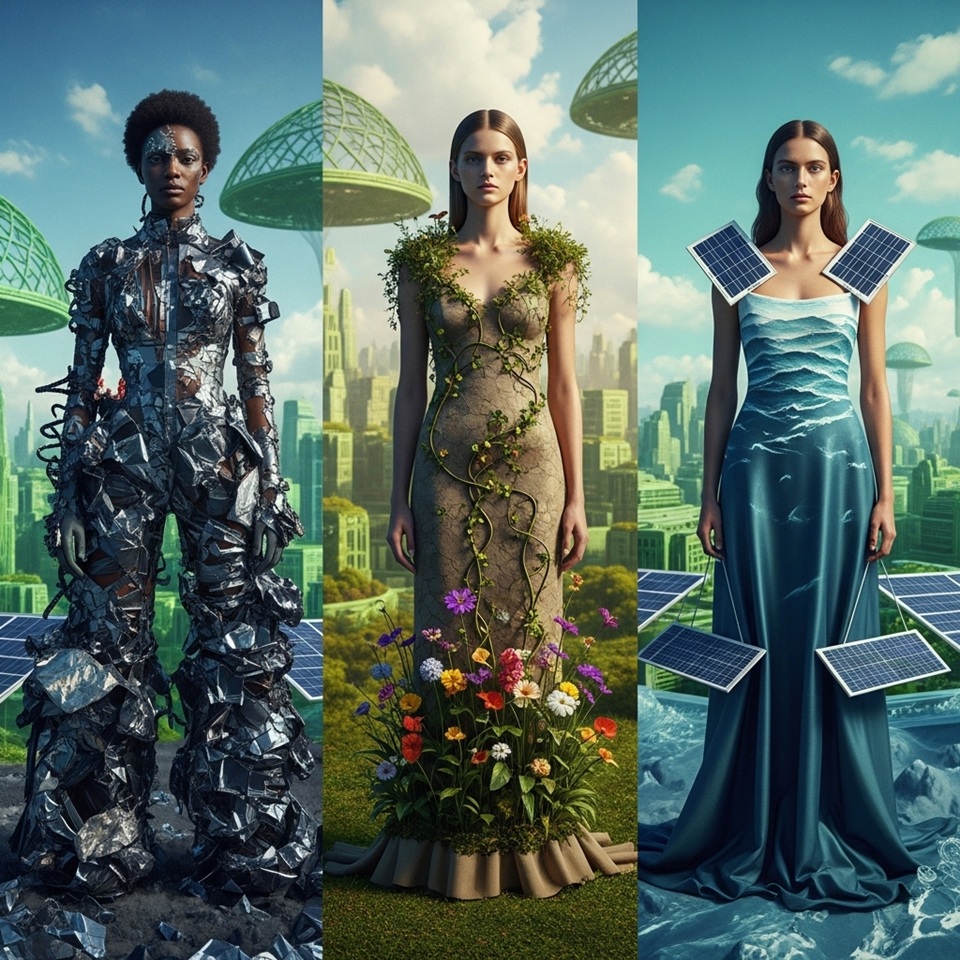
Summary
Eco-fashion is more than a trend—it’s a cultural shift. It combines environmental awareness, ethical labor, and social inclusion into one powerful statement: we are all connected. Whether it’s through sustainable fabrics, diverse models, or upcycled designs, fashion is becoming a bridge between people and the planet.
The transformation we see in eco-fashion is a mirror of what humanity can achieve when love, empathy, and responsibility replace greed and division.
FAQs
1. What is eco-fashion?
Eco-fashion refers to clothing and accessories made using environmentally friendly materials and ethical production practices. It aims to reduce pollution, waste, and exploitation in the fashion industry.
2. Why is eco-fashion important for climate transformation?
The fashion industry contributes heavily to carbon emissions and waste. Eco-fashion helps reduce these impacts through sustainable materials, fair labor, and mindful consumption.
3. How can I identify a real eco-fashion brand?
Look for certifications like Fair Trade, GOTS, or B-Corp. Also, check for transparency about material sourcing, labor conditions, and production methods.
4. Is eco-fashion only for wealthy people?
Not necessarily. Thrift shopping, upcycling, and supporting local artisans are affordable ways to practice sustainable fashion. You don’t need to buy expensive brands to make a difference.
5. How does eco-fashion promote inclusivity?
It celebrates diversity in skin color, body shape, culture, and gender. Many sustainable brands now use inclusive designs and fair labor practices to support unity and equality.
Related Articles:



